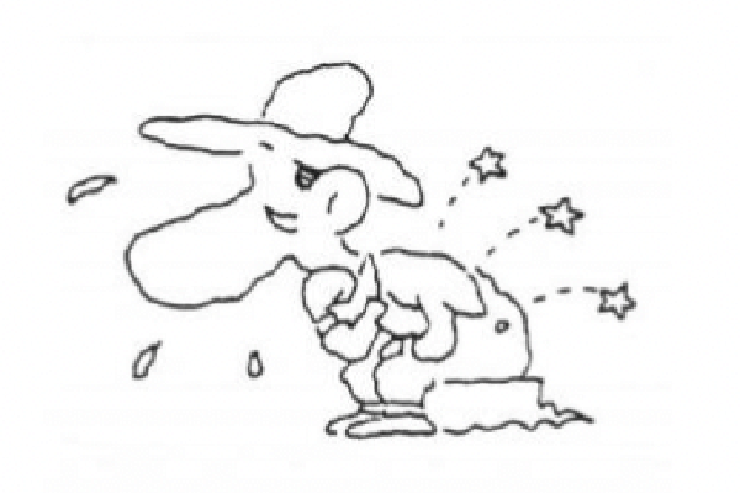
Is there such a thing as gardening romance? If you’ve heard me talk about my wife Becky, you know there is. Becky and I both love the human connection gardening brings, and we both love sharing stories.
Speaking of stories, I once met a woman who said she had a black thumb. She was a bit defensive about the whole thing and told me it was cheaper to buy produce at the market, and more lovely to buy cut flowers at the end cap of the grocery store. When I saw her again ten years later, she was growing the most prolific tomato garden I’ve ever seen, and even taught me a few tricks for keeping aphids at bay. I swear she even told me she hated tomatoes when we first crossed paths… I nodded off after that.
There is a certain kinship you form with other gardeners, so upon our second encounter we had plenty in common, and more of a yin and yang relationship rather than oil and water. That’s the feeling I get from today’s piece, The Joy of NonGardening. It’s a hilarious nod to exactly these types of exchanges that non-gardeners and gardeners have every day.
“What kind of mulch do you like?”
“Oh, gravel, I suppose. Noisy party, isn’t it? Let’s go somewhere.…”
But sometimes they end in gardening romance!
When you read this story, I think you’ll have both cringed and laughed equally like I did. But don’t worry, the author, Jeff Taylor, gives us a perfectly happy ending that will warm your gardening heart.
Discover 7 top tips for growing, harvesting, and enjoying tomatoes from your home garden—when you access the FREE guide The Best Way to Grow Tomatoes, right now!
A Gardening Romance for the Ages
The following gardening romance story comes from The Weeder’s Reader: GreenPrints’s Greatest Stories. Gardening stories like these always warm my heart because I can’t think of anything better than connecting over a well-loved plot of soil.

The Joy of NonGardening
What happens when a born gardener and a born nongardener meet.
By Jeff Taylor

Some people are born gardeners, and some are not. When representatives from these two groups meet, they slam together like magnets, for some reason. There’s instant rapport:
“What kind of mulch do you like?”
“Oh, gravel, I suppose. Noisy party, isn’t it? Let’s go somewhere.…”
Sometimes they marry. The born gardener brings seed catalogs on the honeymoon, and the born nongardener is told stories of the art of grubbing in the dirt to make vegetables. Far into the night, they discuss mulch and fertility. Like vampires, born gardeners recruit fieldhands by biting their necks.
A newly recruited fieldhand myself, I would soon discover that sweat, like tomatoes, also comes in quarts. Hitched up to a one-person mechanical plow, I began my education in vegetable manufacture. Right off, I learned that it was easy to concentrate, zen-like, on one thought only while turning a hectare of hardpan into clods. “This,” I thought, “is hard work.”
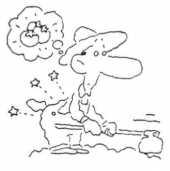
Slowly, our garden took shape. To my eye, it looked like loose dirt with expensive filth in it. But we worked an entire day to shape it, shoulder to shoulder. The next day, while the chiropractor worked on me from shoulder to shoulder, she planted. We spent that night discussing the little things that make a marriage, like surviving a coronary infarction and sharing the elephant liniment. The difficult part was over, she said. Now all we had to do was water and weed a few hours every day, and relentlessly kill every insect on earth.
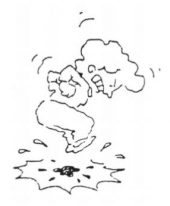
Perhaps many great thinkers have enjoyed murdering slugs and bugs, but I was quite content to let them live.
“But they’re eating our chard,” Joy said. Which brought us to our first crisis of opinion: My wife had planted many beds of debatable vegetables. Frankly, I had expected only an acre of tomatoes and three or four good-sized corn trees. Eating our chard didn’t strike me as a capital crime; and anyway, I added with an airy laugh, chard should only be eaten during wartime or famine. And ditto for turnips, double ditto for squash, and definitely ditto squared for daikon radishes.
She asked me to elaborate.
“Well,” I said, “let’s start with chard. Its very name sounds like a term for the residue left in the waste treatment pipes of a paper mill. And it tastes exactly like it sounds.”
“Oh, come on,” she said.
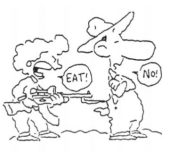
“And turnips: Children are forced to eat them solely for the discipline and vitamins, swallowing forkfuls of backtalk and grey turnip casserole. But they taste no better, 30 years later. The gun has not been invented which, when pointed at me, would cause me to suck on a turnip.”
“Nonsense,” she said. “As for squash, they are merely for giving away to the needy or suckers. Or you can slice ’em up, dry them, and eventually use them in compost recipes. Their orange flesh is only edible if drenched in butter and fed to the dog.”
“Give me a break,” she said.
I’m happy to report that we didn’t have a fight right out in the middle of the garden. That sort of thing shows no class at all. We went inside first.
Born nongardeners should be advised that a day of reckoning comes, spread out over several weeks. This is called “The Harvest.” Fears of tomato and corn shortages prove baseless, for even a small garden in the hands of a born gardener will yield enough to feed West Bangladesh. We picked and pulled and shelled and peeled and dried and canned and blanched and froze from can’t see to can’t see, and still the garden upchucked more bounty. We laid in a lifetime supply of turnips and chard and squash and zucchini, enough to gag every growing child in Christendom, and still it came forth. Even Joy was concerned.
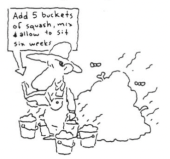 “You know what we plumb forgot? Eggplant. Next year we’ll have to …”
“You know what we plumb forgot? Eggplant. Next year we’ll have to …”
From my bed of pain and weariness, I looked up. My knuckles were swollen to the size of walnuts, and my body craved the solace of the grave. I had worked like a sharecropper’s horse, and so had Joy. Surely there was something else we could raise. Anything else would be easier than this.
“Let’s have children,” I said, innocently. “Lots of them.” ❖
By Jeff Taylor, published originally in 1990, in GreenPrints Issue #2. Illustrations by Jack Vaughan.

Did you enjoy this gardening romance story? Do you have one of your own? I’d love to hear it!
Discover 7 top tips for growing, harvesting, and enjoying tomatoes from your home garden—when you access the FREE guide The Best Way to Grow Tomatoes, right now!





Just a good laugh!